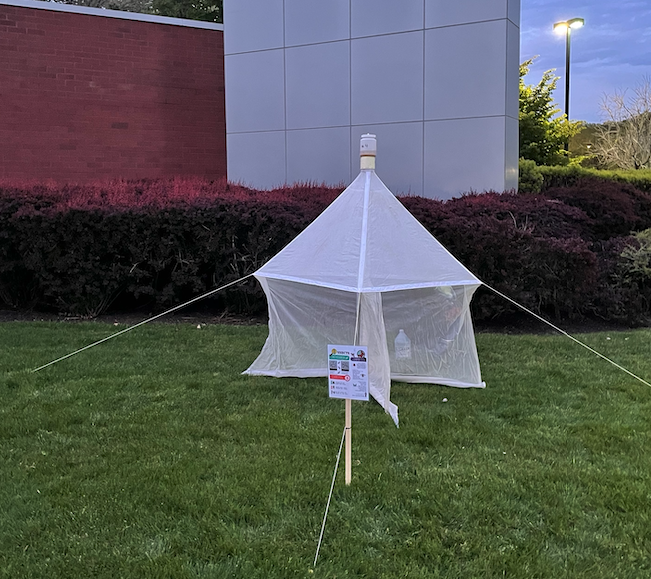A Christopher Newport University graduate student, Teri Ramey, works to identify the effects of urban environments on bugs
The 1998 film A Bug’s Life gave audiences a glimpse of what it’s like to be a bug in the countryside. Teri Ramey, a student in the Environmental Science program at Christopher Newport University (CNU), is taking a look at what it’s like to be a bug in an urban environment. In order to do this, she enlisted the help of U.S. Department of Energy’s Thomas Jefferson National Accelerator Facility and other spaces around Newport News, Va.
Ramey, a native of Norfolk, Va., shared that she would often admire the abundant fireflies across the city during summer months. However, as years passed, she took note of their significantly decreased population size.
“Fireflies serve as an indicator species that there is a larger problem in an ecosystem,” she said.
“Since I was a kid, I have always been fascinated by bugs. I would conduct my own small science experiments by poking rollie pollies to see them roll up,” she said.
Following this observation, she began researching the life cycles and habits of fireflies. She quickly recognized there was a larger problem to examine regarding bug and insect life within city environments. “I want to know where all of the bugs went!” she exclaimed.
Before beginning classes at CNU in the fall of 2020, Ramey contacted her thesis advisor, Richard Sherwin, Ph.D., to explain her findings. After receiving approval, Ramey began to plan and organize her master’s thesis project examining the impact of urbanization and landscape management on bug and insect species.
Ramey’s project is carried out by way of malaise traps located in differing environments in Newport News, Va. A malaise trap is similar to a tent, with the addition of a net that traps insects. Once trapped, they are led to a funnel where a collection of ethanol is located.
The malaise traps are strategically placed in three distinctive microhabitats across the city where a variety of data is able to be collected. They can be found at Newport News Park, the Beaver Dam Restoration Site and at Jefferson Lab. At these sites, the traps are positioned within even narrower microhabitats in an effort to represent as many as possible.
“For example, at Newport News Park there is a trap deep in the woods and one closer to public activity,” she explained.
Ramey chose Jefferson Lab as a site for this project because of the large number of wildlife, including geese and deer that are often seen on lab campus.
“There are microhabitats within microhabitats everywhere. For example, a forest has countless microhabitats like in a canopy of trees, the forest floor or even around one specific tree. It is essentially an ecosystem within an ecosystem,” she said.
Weekly from March to October, Ramey empties the traps. Then, two CNU undergraduate students, Courtlan Grinder and Ella Metzger, identify every single insect to the lowest taxonomy possible.
“First, they classify it into a family or genus. Then, they categorize it into precise niches. Is it a pollinator or a decomposer? Does it fill more than one role and, if yes, which role is more important?” she explained.
At each site there are surveys, accessible by scanning a QR code, where the public can submit comments. The survey asks the day, time, weather and specific questions about the current state of the trap. Viewers are also able to submit photos and any additional input. Ramey admitted this is her favorite aspect of the project because it incorporates citizen science.
“Through this research, I think we will find that there is not as much richness and diversity among different sites. This possible conclusion could be partly based on the increased number of urban exploiters that are not filling any specific ecological niche which, in turn causes the needs of the habitat to be left unmet.
“I am grateful for sites like Jefferson Lab that have allowed be to conduct this important research,” she added.
The traps will remain on the lab campus until October 2022, where they will have collected nearly two years’ of data.
By Abbey Ballance
Contact: Rebecca Anderson, Jefferson Lab Communications Office, duckett@jlab.org


